Pests in Paradise – tackling invasive species in the Daintree Rainforest
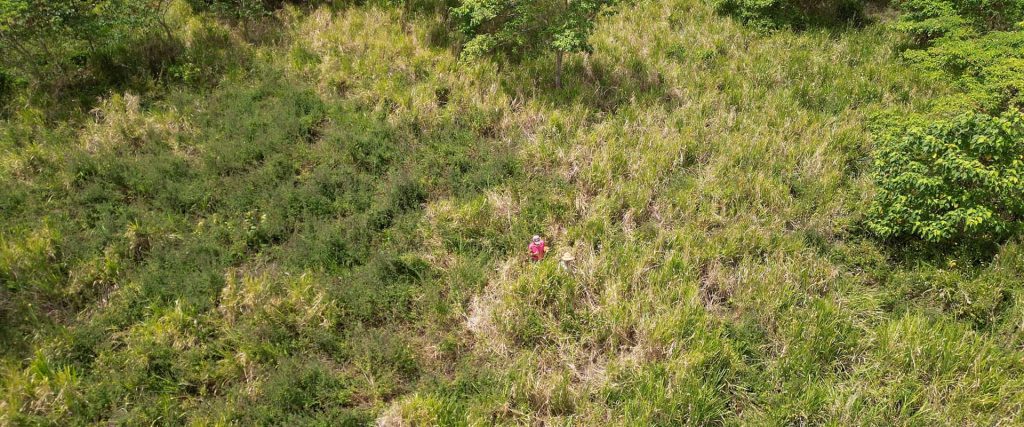
Rainforest Rescue survey the future restoration project at 110 Cape Tribulation Road, disappearing into a sea of overgrown invasive Guinea grass. ©Hayden White
The severe global threat posed by invasive alien species is underappreciated, underestimated, and often unacknowledged.”
United Nations Environment Programme
While the threats of climate change, habitat fragmentation and loss, are grabbing headlines with their profound impact on biodiversity – invasive species are creeping, crawling, sprouting and blossoming their way into the native Australian environment.
Collectively, each year, invasive species cost Australia $25 billion; the cost to agriculture alone from weeds is at least $5 billion a year. For Rainforest Rescue, as Hayden, our Daintree Land Manager, explained, “We’re always dealing with an invasive species when doing habitat maintenance”.
And, with Rainforest Rescue on the cusp of its biggest restoration project to date at 110 Cape Tribulation Road, we face a landscape strewn with well-established invasive weeds and critters.
So, let’s look at what we’re up against, how we’re gearing up for combat and why you might be one of the most powerful allies in the fight against a most persistent threat to the Daintree’s unique plants and animals.
Why are invasive species here?
Invasive alien species are one of the five major direct drivers of biodiversity loss globally, alongside land and sea-use change, direct exploitation of organisms, climate change, and pollution. In fact, Target 6 of the globally-adopted Kunming-Montreal Global Biodiversity Framework is to ‘eliminate, minimise, reduce and or mitigate the impacts of invasive alien species on biodiversity and ecosystem services’.
Invasive species compete with native species for food, water and other resources – often with aggressive behaviours designed to outmuscle other flora and fauna. Most were introduced to Australia by humans, as livestock, high yield crops, to beautify gardens or, perhaps most infamously in the Cane toad’s instance, to combat other introduced species. A number of species also arrived without invitation, such as exotic fungi and the infections they cause.
Lose, lose – the cost of invasive species.
Knowing that as Hayden mentioned, “We’re always dealing with an invasive species when doing habitat maintenance”, what’s the cost of the problem? You can broadly split the ‘price of pests’ into two cost centres – the environmental and the operational. For the former, the cost is native species’ ability to compete with the invasive competitors. And for the latter, time, energy and resources (including your generous support) are needed to mitigate the impact.
As an example, Guinea grass (Megathyrsus maximus), originally from Africa and the Middle East, is used as a fodder crop for cattle, but can aggressively outgrow other species in cleared or disturbed areas of lowland habitat, such as when a flooding event happens. Vying for soil nutrition, water and sunlight, the grass can rapidly smother out slower growing species.
For our land management team, this species is an everyday maintenance challenge for restoration projects, all year round.
“We’d be planting more trees if we weren’t spending time removing Guinea grass, simple as that” sighs Hayden, “It’s an absolute pain to keep dealing with and it’s such a relief to get canopy closure happening and see the grass shaded out at last. Guinea grass is the commonest weed we manage; the open areas at 110 Cape Tribulation Road are covered in it from seed dispersal and proximity to agriculture, so there’s a big challenge ahead with restoring this land into thriving native habitat.”
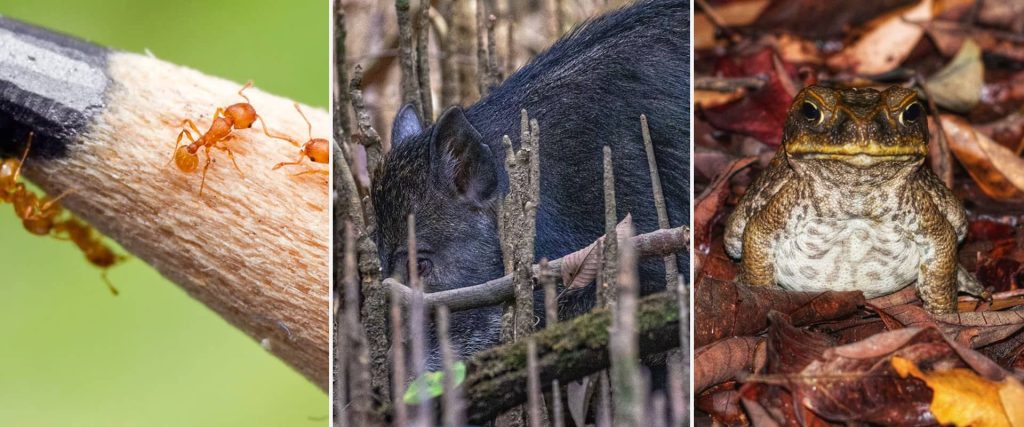
Electric ants, Feral pigs & Cane toads are all invasive species present in the Daintree Rainforest. ©Alex Wilder & ©David White
Dealing with determined invaders.
Continuing the challenge, three species of invasive fauna are top of Rainforest Rescue’s watch list: Electric ants, Feral pigs and Cane toads.
All three species are proven to be damaging the tropical rainforest ecosystem – primarily in how they voraciously compete with native species for food, but also in how they defend themselves from predation, which makes it difficult for native wildlife populations to cope with such forceful intruders.
To date, only our protected properties within the Cape Kimberley are known to have been affected by Electric ants (Wasmannia auropunctata). We remain vigilant – our Land Management and Nursery Teams work with Biosecurity Queensland to perform necessary reporting and checks, and our Native Nursery is a volunteer ‘Sentinel Site’ for regular monitoring.
In contrast, Feral pigs have been sighted via our camera trap monitoring at many locations that Rainforest Rescue protects. Their intense search for food causes damage to restored and remnant rainforest, as well as nesting birds and other animals – especially along riparian areas.
Fencing off our restoration work in the early stages of tree growth can give saplings a better chance of surviving the ‘ploughing’ of pig snouts, which damage root structures and upend young trees.
Within the Eastern Kuku Yalanji Indigenous Protected Area (IPA) which includes the Daintree Rainforest, a Feral pig management program has previously considered the potential cultural value of a sustainable population, to maintain traditional hunting techniques and provide a cheap source of protein for communities.
Following a recent field trip to hone plant identification skills, our Land Management Team were surprised to discover Cane toads (Rhinella marina) at high altitudes. It’s truly disheartening to see them reaching protected areas like Mount Lewis and Mount Bartle Frere, Queensland’s highest peak. Their presence serves as a stark reminder of the devastating impact invasive species can have on our ecosystems.
To combat the poisonous and prodigious toads, which were a failed attempt by farmers to solve beetle damage to sugar cane crops, requires ongoing diligence.
Rainforest Rescue uses Cane toad traps to slow down the reproduction rate of this ubiquitous pest, as well as removing toad spawn from watercourses traversing protected land. There is evidence that native wildlife is retaliating, however, Cane toads still present a terminal peril to threatened Daintree species such as Spotted-tail Quoll (Dasyurus maculatus), which mistakenly eat the toxin-rich toads.
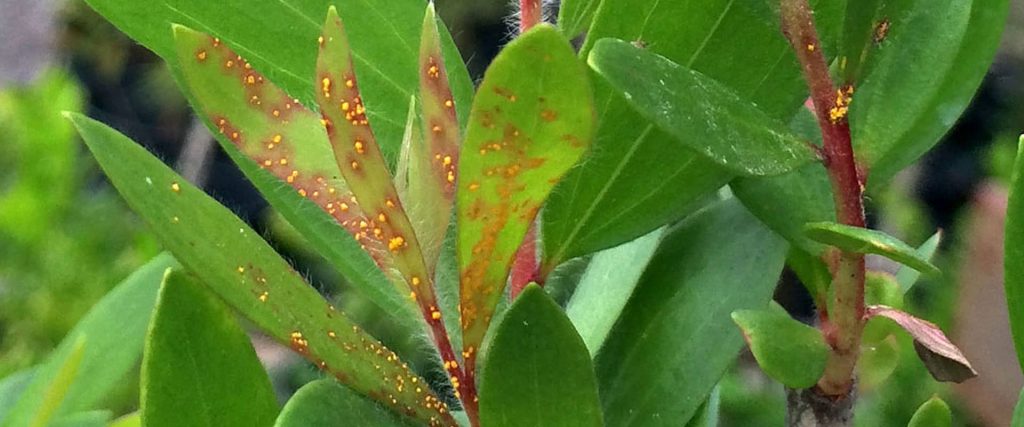
Native plant affected by Myrtle rust, a fungal disease that is fatal to many tropical rainforest trees. ©Scott Nelson
A big little problem – Myrtle Rust.
Myrtle rust is a disease caused by the exotic fungus Austropuccinia psidii, native to South America which affects trees in the Myrtaceae family, such as Lilly pillies, Paperbarks (Melaleuca sp.), and Eucalypts. The disease impacts on tree growth, fertility and leaf health, and can cause death in tree populations.
Myrtle rust was first detected in Australia on the central coast of New South Wales in 2010, which means that in a just 15 years it’s travelled 2,500 kilometers to the Daintree Rainforest!
There are at least 15 rainforest tree species at risk of extinction in the wild due to myrtle rust infection. As Myrtaceae is the largest plant family in Australia and it often dominates localised areas, the threat is potentially catastrophic to a tree-dense landscape like the Daintree.
For our Native Nursery, Myrtle rust is a key Biosecurity concern. Our Nursery Manager and the Nursery team are vigilant in identifying and resolving any signs of a potential outbreak. Unfortunately, Myrtle rust is already active in the surrounding rainforest, which is why we have operations processes in place to minimise the risk of Rainforest Rescue’s restoration actions exacerbating outbreaks and further spreading this persistent disease amongst the native flora of the Daintree.
At Rainforest Rescue, we have also developed and implemented an Integrated Pest Management approach for our Native Nursery, which Nursery Manager, Marine points out is “absolutely necessary, as a duty of care to the environment, now that we operate our restoration activities at a larger scale than ever before. We cannot risk a biosecurity outbreak in an ecosystem as ancient as the tropical rainforest of the Daintree, it would add to a region already under stress from natural disasters (flooding) and climate change.”
Turning weeds on themselves.
In the case of Billygoat Weed (Ageratum houstonianum), yet another South American invader that escaped from Australian backyards) our Land Management Team identified that this species was of some benefit during the early stages of habitat restoration.
Because Billygoat is so pervasive, it acts as a blanket over areas of exposed ground, a growth pattern that typically happens when a tree planting takes place. This blanket then smothers other weeds that may grow, allowing the young trees to establish themselves with minimal impedance. Then, when the trees are mature enough to create a canopy, the sun-loving ‘Billygoat blanket’ is shaded out and dies off.
The alternative is to use herbicides, such as glyphosate, to control the weeds. But, due to the proximity of restoration sites to waterways and the contention over glyphosate’s impact on the environment, we choose to seek alternative solutions and have done so for many years.
The bitter irony of invasive species eradication
Calopo Vine (Calopogonium mucunoides, surprise… It’s native to South America!) was introduced by farmers across the world as a pasture legume to fix nitrogen back into soil for supporting the continued growth of healthy crops. For Rainforest Rescue, it’s another abundant and tenacious weed that our team contends with.
As the amount of land we restore into rainforest habitat increases, we encounter a recurring theme, the disruption of natural ecosystems through human impact. Plants such as Calopo Vine that were introduced are then removed during restoration projects. Ironically, these non-natives are then replaced by native species that perform identical functions in an environment!
In coming full circle, we’re witnessing firsthand why a bioregion like the Wet Tropics of Queensland supports appropriately adapted species – as opposed to attempts to support non-native species, like exotic arable crops, through altering elements such as the local soil structure.
Instead, the thriving species are native to the climate, topography, geology and soils of the Daintree region, ‘back home’ once again through reintroduction during restoration. But in finally realising this, humans and nature are paying the hefty costs of past mistakes, however well-intentioned they may have been.
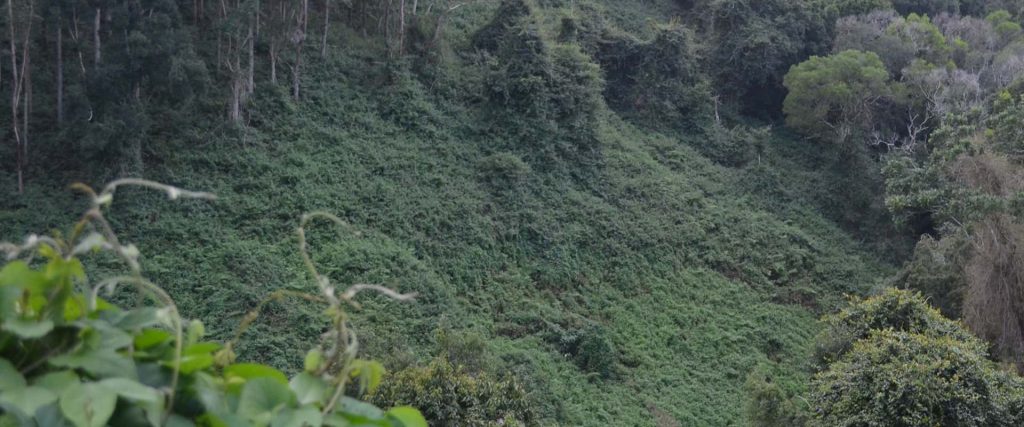
Invasive species like Morning glory, a popular garden plant, threaten the future of Australian native species. ©Jeanette Nobes
An uncertain future for native species?
As conservationists with a deep sense of empathy for the natural world, we must deal with a concept that can feel counterintuitive – namely the ‘death’ of a species to benefit the future of another. But we must do so to ensure native species’ survival. Australia is one of the few developed countries globally to lead native extinction rates, with species like Cane toads impacting on native marsupials, amphibians and other faunal families.
One of Rainforest Rescue’s supporters and an ardent activist in tackling invasive weeds is Jeanette Nobes, known locally in regional south Queensland as the ‘Morning glory lady’.
A conservationist for over 40 years, Jeanette identified that the convergence of council slashing regimes, green (garden) waste dumping by residents and management of roadside areas was exacerbating the spread of introduced plants such as Morning glory (Ipomoea sp.) which rapidly overtook native flora in forested gullies to create a blanket of invasive weeds.
Clearly, we have a connected, systematic issue with invasive species – connected to our activities in agriculture, transport infrastructure and domestic life. In that way, we’re all responsible for addressing biosecurity and invasive species challenges.
Our teams pointed out that locally in the Wet Tropics we can expect there to be additional biosecurity issues – such as weed growth on fallow land due to sugar cane being uncropped – while farmers resolve solutions to the transition of agriculture practices.
It would be naive of Rainforest Rescue to think that we can eradicate all evidence of invasive species locally, in fact, the Federal Government has already announced that it is not feasible to remove Myrtle Rust from Australia.
Yet, we can and must do what is possible to reduce the impact on native flora and fauna before it’s too late. Co-Stewardship of the natural environment and adjacent developed areas is necessary. It’s why Rainforest Rescue is part of the Wet Tropics Restoration Alliance and why we work in partnership with private landowners, local communities and regional organisations. If we have any hope of turning the tide on the spread of weeds and pests, it’s through a concerted, collaborative effort to do so.
Be part of the solution
Marine and Hayden suggest the following ways to be ‘weed-wise’ and take action to combat invasive flora and fauna. In fact, your own backyard may be where you can have the biggest impact!
- Familiarising yourself with your local government area’s biosecurity threats and pest species – for the Daintree region this can be found on the Douglas Shire Council website or Wet Tropics Management Authority website.
- Supporting local volunteer ‘worker bees’ that focus on weed eradication in your nearby area.
- Using online resources available to help with your backyard plant choices, to create a native-friendly garden.
- Identifying diseases that appear upon your plants, using appropriate measures to treat them, and keeping your tools and gardening equipment clean.
- Humanely addressing cane toad infestations, through solutions such as Watergum’s traps and taking part in their ‘Great Cane Toad Bust’ each January.
- Tether or contain pets, in particular dogs and cats, so that they can’t enter natural environments close to your home as ‘invaders’! Young birds (including Southern Cassowary chicks) and mammals are particularly vulnerable to our best friends if they choose to roam.
By law, everyone in Queensland and further afield has a general biosecurity obligation (GBO) to take reasonable and practical steps to minimise the risks associated with invasive animals, plants and diseases.
We’d much prefer to be planting and protecting rainforests than pulling up weeds and tracking down destructive pests, but due to past actions, this is the state we’re in.
Join us in taking on an ever-present challenge, that along with climate change is causing a threat to the biodiversity of the natural environment, not just in the Daintree, but wherever you are.
For the rainforests, and nature!
Want more good Rainforest news in your life?
Subscribe to our eNews | Follow us on Instagram | Like us on Facebook | Subscribe to our YouTube channel
Help Protect Rainforests Forever
Donate to Protect Rainforests Forever | Become a Rainforest Guardian for as little as $2 a month | Partnership Options

